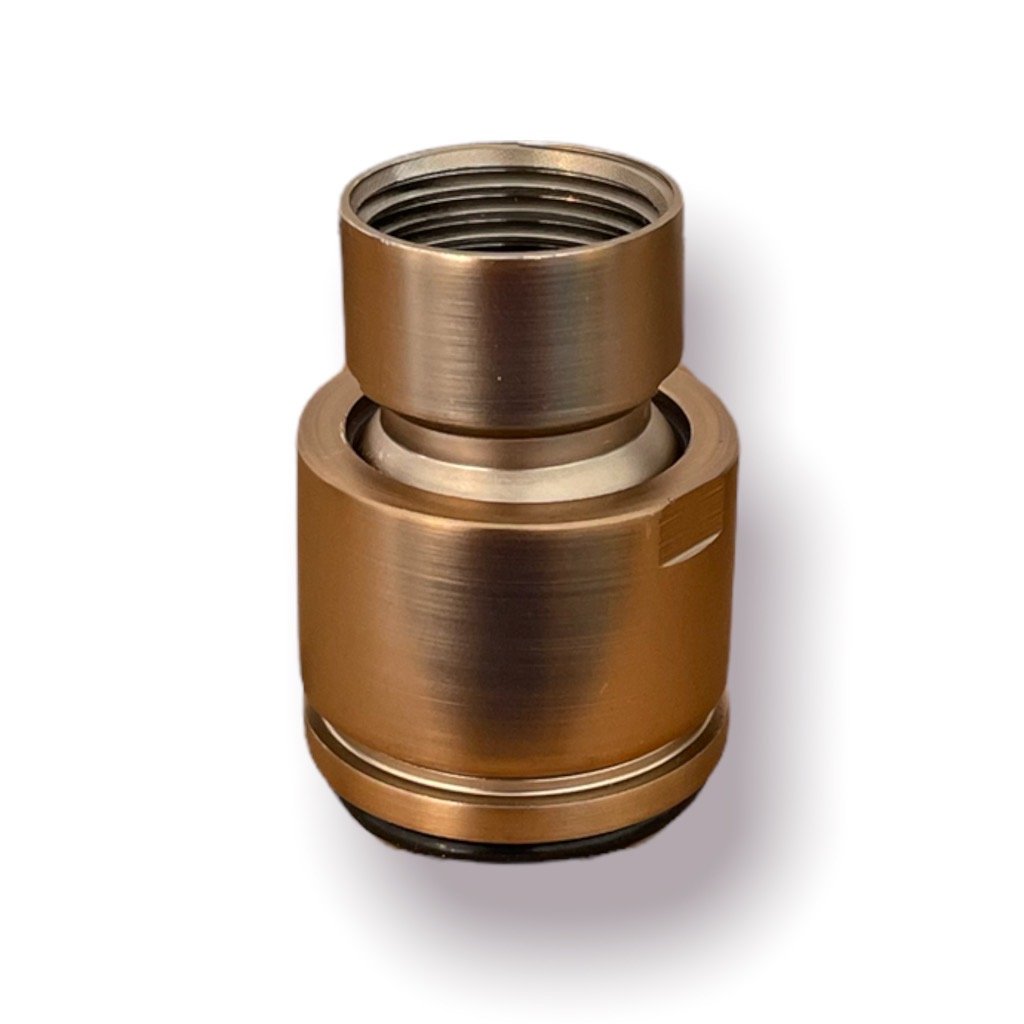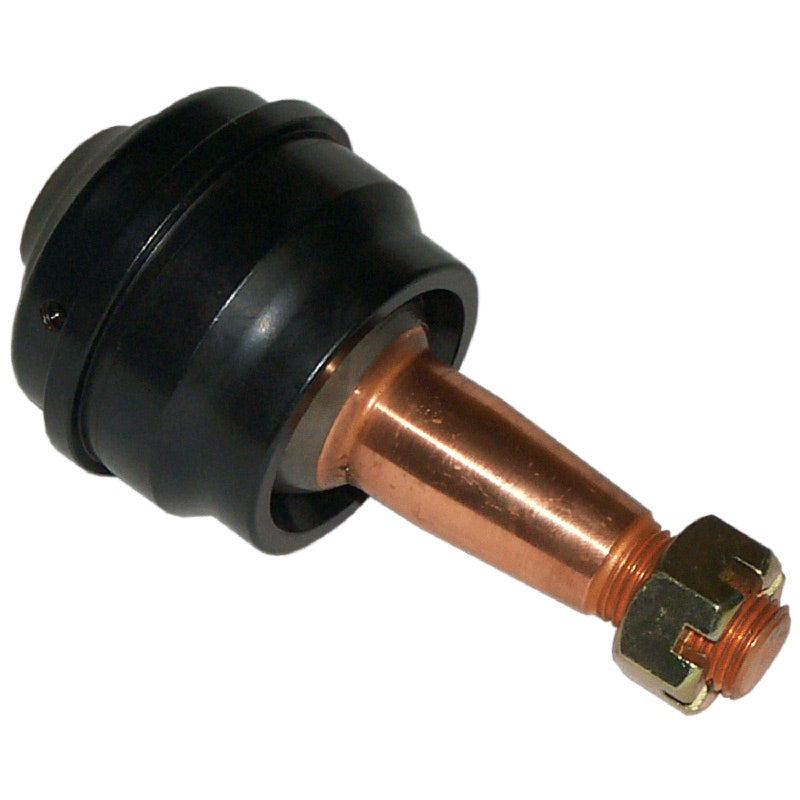Lower ball joints are an essential part of your car’s suspension system. They are located at the bottom of the wheel, connecting the wheel to the control arm. The job of the lower ball joint is to provide a smooth, controlled movement of the wheel as it travels up and down over bumps in the road. Without this joint, your car would not be able to respond properly to road conditions, resulting in an uncomfortable ride.
The downside of lower ball joints is that they are subject to wear and tear over time due to exposure to dirt, water, and oter elements that can damage them. This can cause them to become loose or even break entirely. When this happens, it could result in a loss of control over your vehicle since these joints are responsible for holding the wheels in place. Fortunately, you can avoid this issue by greasing your lower ball joints regularly.
To grease your lower ball joints correctly, all you will need is a grease gun and some appropriate grease for the job. Begin by locating all four of the lower ball joint fittings on each wheel and preparing them for lubrication by cleaning any dirt or debris away from them with a rag or brush. Next, attach the grease gun tip into each fitting one at a time and add 3-4 pumps of grease into each one. Do this for all four wheels then move on to greasing any other bushings such as sway bar links or tie rods that may require it as well.
By properly greasing your lower ball joints on a regular basis (every 5-10 thousand miles), you can ensure that they remain adequately lubricated and free from wear and tear over time so you don’t experience any unexpected issues while driving!
The Benefits of Greasing Ball Joints
Yes, you should put grease on ball joints. Grease helps to lubricate the joints and allows them to move freely without making too much noise. It also helps to protect aganst wear and tear caused by friction. When greasing your car’s ball joints, make sure to use a quality grease specifically designed for automotive use. Apply the grease in small amounts with an applicator gun or brush, evenly coating the entire area of each joint. Make sure to regularly check the level of grease in your ball joints, and if it appears to be low, replenish it as soon as possible.

Locating Ball Joints for Greasing
To grease a ball joint, you first need to locate the grease fitting. The ball joint connects the steering knuckle to the control arm and the grease fitting may be on the top, side, or bottom of the joint. Once you have located the fitting, insert the tip of a grease gun into it and squeeze the trigger to release grease into the fitting. Make sure to use the appropriate type of grease for your particular vehicle. After greasing, remove any excess with a clean cloth or rag.
Frequency of Greasing Lower Ball Joints
It is recommended to grease your lower ball joints every 5,000 to 10,000 miles. This can be done with a grease gun, which should add 3-4 pumps of grease into the ball joint and 1 pump in each of the greaseable bushings. If you are driving through areas with creaks or mud pits, it is advised to grease the ball joint immediately after exiting those conditions.
Is Wheel Bearing Grease Suitable for Ball Joints?
Yes, wheel bearing grease is suitable for use in ball joints. It is specifically designed for high-pressure applications, and can effectively reduce friction and wear on the joint’s components. Moly grease is the preferred option for wheel bearings and ball joints due to its excellent lubricating properties, which help to reduce wear and tear on the parts over time. Be sure to use a grease that meets the manufacturer’s specifications in order to ensure optimal performance.
Do New Ball Joints Come Pre-Greased?
Yes, new ball joints typically come pre-greased with assembly grease. This grease is designed to protect the components during shipping and installation. However, it is important to ensure that the ball joints are greased every 4 months in order to ensure optimal longevity.

Cost of Greasing Ball Joints
Having your ball joints greased is an important part of regular car maintenance to ensure the safety and longevity of your car. The cost for this service can vary depending on the make and model of your vehicle, but will typically be between $106.20 and $129.80. This includes the time it takes for a mechanic to complete the job, which is usually around 0.90h to 1.10h.
The Effects of Overtightening Ball Joints
Yes, you can overtighten ball joints. If you use an impact gun when installing them, it can cause the ball joint to be overtightened, leading to premature wear and damage to the steering knuckle. To prevent this from happening, always use a torque wrench when installing ball joints. This will ensure that the ball joint is not tightened too much and that it is properly secured in place.
Using Grease for Ball Joints
For ball joints, we recommend Nye’s Fluorocarbon Gel 880. It is a PTFE-thickened, heavy viscosity dimethyl silicone grease that provides excellent water resistance and structural stability. It can be used in a wide temperature range, making it perfect for most applications. When applied to ball joint surfaces, the thick grease ensures protection against dirt and contaminants while the low coefficient of friction helps reduce wear on the joint components. This grease also provides superior lubrication and oil retention, ensuring optimal performance and durability of your ball joint system over time.
How Many Presses Can Be Applied to a Ball Joint?
A ‘press-in’ ball joint should only be replaced once. After the initial replacement, any future repair should always use a fully assembled wishbone arm instead. This is because pressing in a ball joint multiple times can cause damage to the vehicle’s suspension system and reduce the lifespan of the parts. Damage from repeated pressing could lead to a loss of control while driving, making it dangerous for drivers.

Conclusion
In conclusion, lower ball joints are an essential component of a vehicle’s suspension system, connecting the control arm to the steering knuckle. Keeping tese ball joints properly greased is incredibly important for smooth and quiet operation, and is recommended to be done every 5,000-10,000 miles or after any kind of off-roading or driving through creeks and mud pits. Greasing the joint is a straightforward process that just requires a grease gun and a few pumps of grease into the fitting. With proper maintenance of your lower ball joints, you can ensure your car will be running smoothly for years to come.
